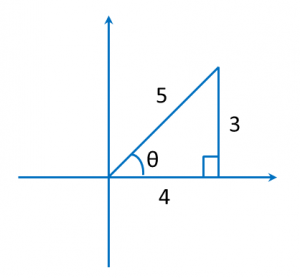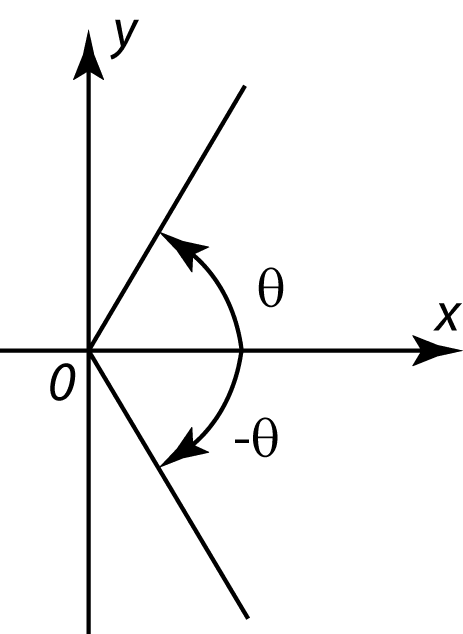5.6 Simple Trigonometric Equations
Steps to solve simple trigonometric equation:
(1) Determine the range of values of the required angles.
(2) Find a basic angle by using calculator.
(3) Determine the quadrants the angle should be.
(4) Determine the values of angles in those quadrants.
Steps to solve simple trigonometric equation:
(1) Determine the range of values of the required angles.
(2) Find a basic angle by using calculator.
(3) Determine the quadrants the angle should be.
(4) Determine the values of angles in those quadrants.
(A) Solving Trigonometric Equation (Basic Equation in sinx/ cosx/ tanx/ cosecx/ secx/ cotx)
Example:
Find all the values of θ for 0° < θ < 360° that satisfy each of the following trigonometric equations.
(a) sin θ = 0.6137
(b) cos θ = 0.2377
(c) tan θ = 2.7825
(d) sin θ = -0.8537
Solution:
(b)
cos θ = 0.2377
(c)
tan θ = 2.7825
(d)
sin θ = -0.8537
(e)
sin 2θ = 0.5293
Example:
Find all the values of θ for 0° < θ < 360° that satisfy each of the following trigonometric equations.
(a) sin θ = 0.6137
(b) cos θ = 0.2377
(c) tan θ = 2.7825
(d) sin θ = -0.8537
(e) sin 2θ = 0.5293
Solution:
(a)
sin θ = 0.6137
sin θ = 0.6137
basic angle = sinˉ¹ 0.6137 = 37.86°
θ = 37.86°, 180°-37.86°
θ = 37.86°, 142.14°
(b)
cos θ = 0.2377
basic angle = cosˉ¹ 0.2377 = 76.25°
θ = 76.25°, 360° – 76.25°
θ = 76.25°, 283.75°
(c)
tan θ = 2.7825
basic angle = tanˉ¹ 2.7825 = 70.23°
θ = 70.23°, 180° + 70.23°
θ = 70.23°, 250.23°
(d)
sin θ = -0.8537
basic angle = sinˉ¹ 0.8537 = 58.62°
θ = 180° + 58.62°, 360° – 58.62°
θ = 238.62°, 301.38°
(e)
sin 2θ = 0.5293
basic angle = 31.96°
0° < θ < 360°
0° < 2θ < 720°
2θ = 31.96°, 180° – 31.96°, 360° + 31.96°, 360° + 180° – 31.96°
2θ = 31.96°, 148.04°, 391.96°, 508.04°
θ = 15.98°, 74.02°, 195.98°, 254.02°



















